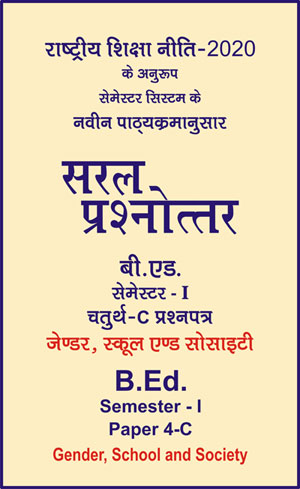|
बी एड - एम एड >> बी.एड. सेमेस्टर-1 प्रश्नपत्र-IV-C - जेण्डर, स्कूल एण्ड सोसाइटी बी.एड. सेमेस्टर-1 प्रश्नपत्र-IV-C - जेण्डर, स्कूल एण्ड सोसाइटीसरल प्रश्नोत्तर समूह
|
|
||||||
बी.एड. सेमेस्टर-1 प्रश्नपत्र-IV-C - जेण्डर, स्कूल एण्ड सोसाइटी (अंग्रेजी भाषाा में)
Question- What type of discrimination is seen against women in the labour market (formal and informal organisations)?
Answer -
Traditionally on the basis of differential representation of women and men in the labour market and also the differential in wages, women's low productivity, their low level of human capital in terms of appropriate skills and training, and family responsibilities, which it hinders more participation in the market, is done on grounds. But the cultural and social composition of gender plays an important role in determining the attitudes of men and women in the labour market. Gendering of the workplace is based on an understanding of the biological differences and attitudes of men and women.
Women's attitudes are judged on the basis of gender construction of the gender division of labour, according to which women are seen as caretakers of children and old age education, cooking or housework. Their sexuality is considered a vehicle of grooming, passivity and calmness.
These aspects of their gender are seen as defining factors in the workplace as well when they enter the market. Based on this perspective, certain jobs are classified as feminine and those jobs are automatically dominated by women, for example, teaching, nursing, clerk work, etc. Not only this, women's income is not considered as primary, but men's incomes are considered supplementary and hence they are considered to have inferior status, have less skill development and get less salary. Thus, the creation of gender roles forms the basis for gender stereotypes of the labour market and wage discrimination for men and women for the same job. This trend continues despite the fact that more and more women are entering the labour market in the contemporary period.
The process of gender stereotyping of the labour market reinforces gender stereotyped roles. Thus, with both the processes reinforcing each other, it becomes objective and thus encourages the process of institutionalizing gender roles in society.
|
|||||

 i
i 









